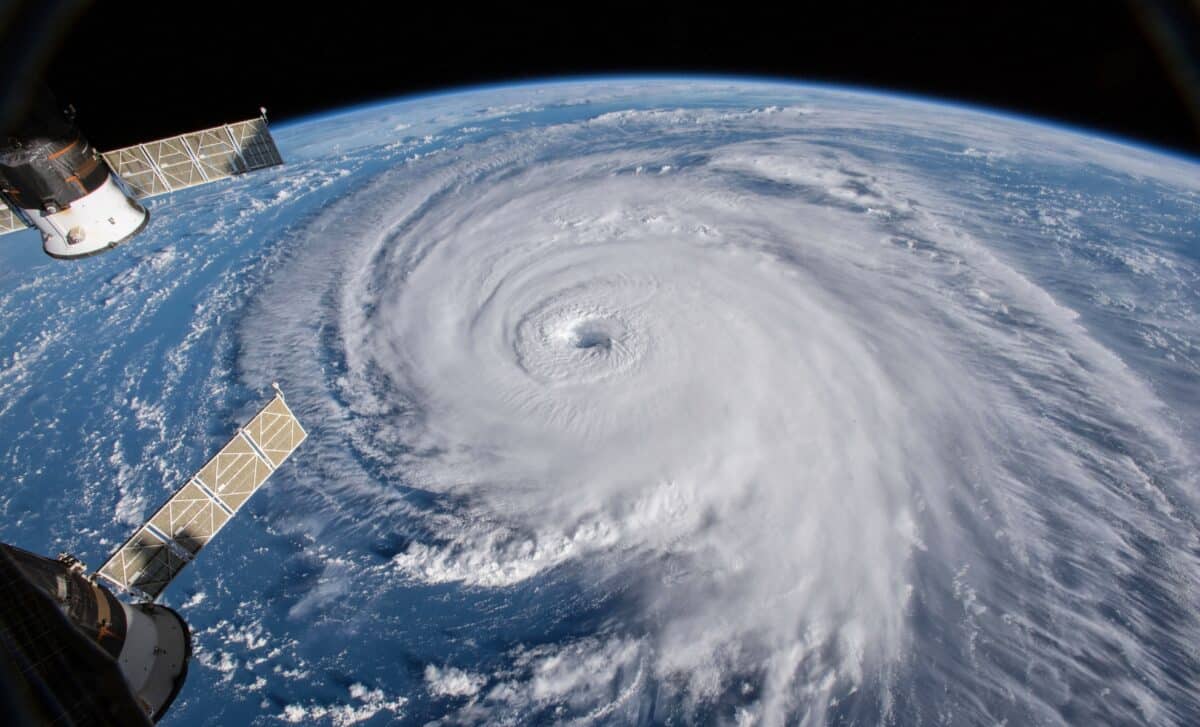A violent atmospheric disturbance during Hurricane Helene in September 2024 triggered unexpected waves in Earth’s upper atmosphere, at nearly 88 kilometers above sea level. Data collected from the International Space Station (ISS) revealed rare mesospheric activity, challenging long-standing assumptions about the separation between surface weather and upper atmospheric layers.
The phenomenon was recorded in the mesosphere, a region of the atmosphere typically regarded as undisturbed by surface weather systems. These findings have caught the attention of multiple space agencies, including NASA, as they suggest that terrestrial storms can generate detectable oscillations far beyond the troposphere and stratosphere.
The events took place during the passage of Hurricane Helene along the Florida coast, a storm known for its intensity and destructive force. What makes this case exceptional is the way it allowed scientists to trace atmospheric wave activity originating from a weather system on Earth and reaching into one of the coldest, least dense layers of the atmosphere. The data offers new opportunities to understand how terrestrial weather might influence space-adjacent zones and could have significant implications for satellite operations and orbital calculations.
Elon Musk and Zuckerberg Are Planning a Future That Will Scare You — Tim Cook Says “No Thanks”
Unexpected Wave Formations in the Mesosphere
Hurricane Helene’s violent winds and heavy precipitation produced atmospheric waves that reached as high as 88 kilometers into the mesosphere. This region is known for its polar temperatures, reaching as low as -100°C, and extremely low air density. Typically considered isolated from surface weather, the mesosphere showed visible disturbances. According to Armees, these waves were “completely invisible from the ground” but were energetic enough to electrify the upper atmosphere.
NASA images confirmed the presence of oscillations generated by the storm, indicating that high-energy weather events can propagate signals far into atmospheric layers previously thought to be stable. The phenomenon challenges existing models that separate surface-level weather from upper atmospheric behavior.
Advanced Instruments on the ISS Reveal New Dynamics
The discovery was made possible by two key instruments aboard the ISS. The Atmospheric Waves Experiment (AWE), operational since 2023, monitors the faint natural glow of mesospheric gases and captured wave patterns radiating westward from the storm’s origin. The second system, the Advanced Mesospheric Temperature Mapper (AMTM), uses infrared telescopes to detect subtle temperature shifts in the mesosphere, even when temperatures fall to -101°C.
NASA researcher Michael Taylor commented that these observations indicate “a previously unexpected connection between Earth-based weather systems and regions of the atmosphere long thought to be isolated.” As reported by the media source, the joint data from both AWE and AMTM provide corroborating evidence of the wave structures and offer unprecedented visibility into atmospheric coupling processes.
Potential Implications for Satellite Trajectories
Although largely invisible from Earth, such upper atmospheric disturbances may have tangible consequences for orbiting spacecraft. Changes in air density, even minor ones, can subtly alter satellite paths, potentially affecting navigation and communication systems. The mission data now allow scientists to monitor these fluctuations and adjust orbital models to better protect space assets.
The findings are part of a larger international effort under the Global Atmospheric Watch program. Collaborative work between NASA, the European Space Agency (ESA), and other global partners is ongoing, aimed at understanding how planetary weather events influence atmospheric dynamics in zones close to space.








